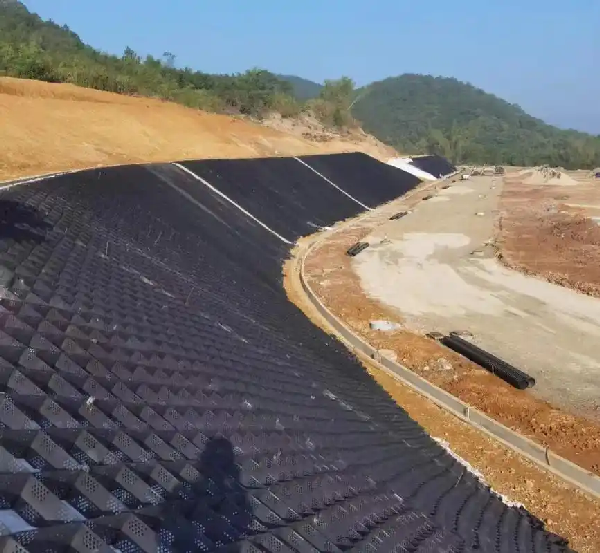The use of geogrid, a new type of geotechnical material, is particularly important for slope protection construction, as it has a good protective effect on strengthening the stability of slope construction and reducing hydraulic erosion. However, traditional construction methods, due to the weathering of concrete, corrosion of steel bars, and gradual decrease in the strength of engineering slope protection, the protective effect will become weaker and weaker over time, resulting in high maintenance and repair costs in the later stages of the project. In addition, adopting traditional construction measures will lead to a series of ecological and engineering problems such as vegetation damage, soil erosion, landslides, and slope instability.
However, the effect of using geogrids for slope protection is completely opposite to traditional methods. Using geogrids for slope protection can not only reduce soil erosion but also improve the original ecological environment. The reason for this is that the slope protection of the geogrid is a new type of slope protection method combined with grass planting. On the one hand, under the combined action of the frictional force between the sidewall of the geogrid and the soil and the lateral constraint force of the geogrid on the soil, the geogrid changes the flow direction of the slope water, prolongs the flow path of the water, and consumes some of the kinetic energy of the water flow on the grid. The runoff and flow velocity can be reduced, which plays a good role in energy dissipation and reduces the erosion of the slope by the water flow; On the other hand, it can also beautify the environment, which is beneficial for the restoration of the slope ecological environment.

The geocell material itself has high strength and other mechanical properties, and has good corrosion resistance and aging resistance, and has good toughness and erosion resistance. At the same time, the geocell can also resist the temperature difference caused by temperature changes. Due to the structural characteristics of the geocell itself, it can slow down the flow velocity, reduce the energy of water flow, disperse water flow, thereby reducing the erosion effect of water flow on the slope soil. At the same time, the geocell has good adhesion to the soil. Moreover, for the backfilled soil in the geogrid, some soil suitable for the growth of green plants can be used, which can effectively improve the vegetation coverage on the slope surface. This not only enhances the anti erosion ability of the soil surface but also plays a role in greening the environment and sustainable slope protection. At the same time, the protective effect of geogrid is good, the effect is fast, the investment is small, and the cost of geogrid is much lower than that of common concrete grid slope protection. In the later stage, only appropriate seasonal maintenance is needed.

The use of geogrids for slope protection has dual significance in improving soil erosion resistance and ecological environment protection. In addition, the use of geogrid cells for roadbed slope protection can simultaneously beautify the environment, reduce erosion, and maintain soil and water. Its construction process is simple, the construction method is tailored to local conditions, and does not require large construction equipment. The construction quality is easy to ensure, and the cost is low. Moreover, it has high adaptability to slope soil and terrain, and is economically reasonable. Geogrids and their reinforcement techniques have only emerged and developed in recent decades. There are already many engineering examples available. Geogrid cells can be applied in many engineering projects, such as the treatment of soft soil foundations, protection of roadbed slopes, road construction in desert areas, and the treatment of uneven settlement at the junction of bridge head jumping and filling excavation.
Post time: Oct-24-2024

